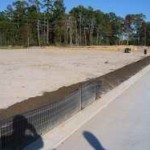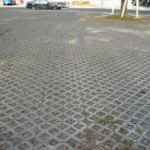- Compost filter berm replaces silt fence
- Pervious pavement in Austin, TX
- Rain garden in Deer Park, TX
Low Impact Development (LID) is a design principle that seeks to decrease the “ecological footprint” of development. LID can cover a wide variety of practices, but here we restrict ourselves to those practices that directly impact runoff water quality. The governing principle behind LID is to provide as many opportunities as possible for water to percolate into the ground, and to provide that opportunity as near to the source as possible. A “thousand drops of water” — many small containments of water do much more and cost less than large “industrial-sized” detention basins.
Organizations and Resources
| Center for Watershed Protection | One of the oldest and best organizations that focus on Low Impact Development. Many publications and a wealth of information is available here. |
| Low Impact Development Center | A non-profit organization balancing growth and environmental integrity. |
| Low Impact Development (LID) Urban Design Tools |
An LID Center and USEPA project to provide guidance to local governments, planners, and engineers for developing, administering, and incorporating Low Impact Development (LID) into their aquatic resource protection programs. |
| LID Workshops | Center for Research in Water Resources and the Lady Bird Johnson Wildflower Center present a series of intensive workshops and consultations. |
| Funding LID | An introduction to the funding options available for LID projects. |
| Low Impact Development Atlas | A national atlas of LID projects in the United States. |
| COMPOST | Check out our own resource page on compost! |
 Texas Community Watershed Partners
Texas Community Watershed Partners 


